How Do We Teach about the Root Races?
Printed in the Fall 2020 issue of Quest magazine.
Citation: Clewell, Andre , "How Do We Teach about the Root Races?" Quest 108:4, pg 24-25, 30
By Andre Clewell
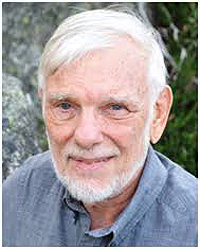 I earned a PhD in evolutionary biology at a major Midwestern university. Later I was introduced to Theosophy. I was distraught to learn that some evolutionary concepts as understood by Theosophy differed widely from contemporary scientific fact and theory. This contentious material was prominently featured in The Secret Doctrine. I was particularly concerned with the elaborate narratives concerning human evolution in earlier Root Races, which read like children’s stories. The chasm separating evolution as understood by biology and anthropology and that in The Secret Doctrine continues to widen, and the two versions seem irreconcilable.
I earned a PhD in evolutionary biology at a major Midwestern university. Later I was introduced to Theosophy. I was distraught to learn that some evolutionary concepts as understood by Theosophy differed widely from contemporary scientific fact and theory. This contentious material was prominently featured in The Secret Doctrine. I was particularly concerned with the elaborate narratives concerning human evolution in earlier Root Races, which read like children’s stories. The chasm separating evolution as understood by biology and anthropology and that in The Secret Doctrine continues to widen, and the two versions seem irreconcilable.
I was chastened by the realization that Theosophy otherwise presented a cogent and compelling case for spirituality and that The Secret Doctrine was written under the unassailable tutelage of Masters Morya and Koot Hoomi. Perhaps, I reasoned, extenuating circumstances would eventually come to light and resolve some of the differences between these incompatible evolutionary accounts.
Uneasily, I shelved my concerns as I continued studying Theosophy. However, I was concerned that other novice spiritual seekers would summarily reject Theosophy on the basis of The Secret Doctrine’s fantastic and contentious evolutionary narrative. As I began to teach Theosophy, I tried to avoid going into any detail that would raise the concerns that my initial Theosophical instructors in Theosophy mentors had raised in me.
This article explores the short-circuited nexus between science and Theosophy and how we can approach this topic when giving Theosophical instruction to newcomers. My concerns begin with teachings in The Secret Doctrine insisting that human evolution represents an evolutionary lineage distinct from that of all other mammals. H.P. Blavatsky repeatedly expresses this opinion. Yet all scientific evidence, including that from DNA investigations, converges upon a different, and indeed incompatible, explanation of human evolution.
In addition, HPB said that atmospheric gases were stable over geologic time (Secret Doctrine 2:159). That notion has been thoroughly and universally discredited. In general, The Secret Doctrine displays a lack of a fundamental understanding of ecology and its formative roles in evolutionary processes. Genetic mechanisms were unknown when it was written, and Mme. Blavatsky’s writings exhibit a profound misunderstanding of the role of sexual reproduction in evolutionary processes.
More importantly, from a contemporary perspective the alleged emergence of protohumans in the Third, Lemurian, Root Race and the early Fourth, Atlantean, Root Race seems fantastic. Others before me have questioned this material. The late TSA president Joy Mills wrote, “The subject of lost continents, both Atlantis and Lemuria, remains a topic of speculation for many people” (Mills, 365). Discussions of the Stanzas of Dzyan 6 through 9 (Secret Doctrine 2:131–226) are especially disconcerting from a modern scientific perspective, particularly the descriptions of sweat-born beings, giants, androgynes, and narrow-brained beings. The gradual solidification of bodies in these beings from a transparent etheric state seems incongruous with modern knowledge about biochemistry, cell biology, and physiology. It would be much easier to accept the accounts of these fantastic beings if they had been presented as human prototypes that were developed by pitris or other demiurges entirely on nonphysical planes of existence.
Notions about these beings and the solidification of bodies appear in the Stanzas. Although Mme. Blavatsky discussed them at length in The Secret Doctrine, she only mentioned these earlier Root Races briefly without elaboration in her Collected Writings, and I have not seen them discussed in other nineteenth-century Theosophical literature, including the Mahatma Letters. At one point, though, HPB suggested that these teachings contain “more or less transparent allegories” and that the portrayal of the sweat-born race “concealed a psycho-physiological phenomenon, and one of the greatest mysteries of Nature” (Secret Doctrine 2:148). Unfortunately she did not elaborate on this assertion.
In his monograph on how The Secret Doctrine was written, Theosophical scholar Boris de Zirkoff explains that the Masters reviewed the manuscript each night as Blavatsky wrote it. Could the Masters have suggested that these topics were indeed allegorical, and could HPB have dutifully added a paragraph to that effect? Her only other recourse would have been to rewrite many completed pages of manuscript for The Secret Doctrine at a time when subscribers for her long-overdue magnum opus were clamoring for its publication.
The Stanzas of Dzyan reduced to writing knowledge that oral tradition had passed down for innumerable generations. Were these teachings garbled from countless oral retellings by elders of what actually happened in Lemuria and Atlantis? Is this why they may be allegorical? Did the Masters decide that HPB was too ill and too burdened by other responsibilities to demand an extensive rewrite, so they allowed her one suggestion of allegory to suffice? We don’t know. We don’t even know if the Masters reviewed all of the nearly 1500 pages of The Secret Doctrine with equal care. Their principal interest was that the spiritual paradigm that we call Theosophy be made publicly available. Mme. Blavatsky’s numerous detours into related Victorian science and scholarship were of less concern to them.
According to de Zirkoff, other Theosophists suggested edits and prepared texts that were incorporated into The Secret Doctrine. We don’t know which passages were contributed by others, although they are unlikely to have concerned the contentious material. Furthermore, other hands made major rearrangements of the text just before the manuscript was typeset. We don’t know for sure if these changes affected HPB’s narrative or if the Masters reviewed the results of this last-minute exercise.
The Masters only imparted information which humanity was ready to absorb and integrate from cultural, historical, and philosophical perspectives. They presented new information within the intellectual context of the times. For example, when The Secret Doctrine was written, the structure of the atom was unknown to science, and the Masters could not explain atomic behavior in terms of subatomic particles and quantum mechanics. Likewise, they were not at liberty to explain the evolution of species in terms of mutation and genetic isolation. They were addressing an audience preoccupied by considerations of biological classification rather than ecosystems, so they did not discuss ecological dynamics in evolutionary processes. They largely limited their instruction to answering questions that were put directly to them, and they did not venture into side issues.
Even so, why did the Masters feel that information in The Secret Doctrine could be effectively presented in the form of fables and fairy tales? Why did they allow HPB to promote an evolutionary lineage for humans that diverged from all other mammalian evolution?
These topics raise more questions than answers, and we have reached a quandary. A reconciliation of the ever-widening gap between The Secret Doctrine with modern biology and anthropology seems highly unlikely.
Yet we are loath to reject the content of The Secret Doctrine, which was overseen by Masters who also provided us with spiritual theory that unites the wisdom traditions of the ages. The Masters know more than we do. They have much better access to knowledge on the higher mental and intuitional planes than we do. Who are we to doubt them? Unfortunately, they are no longer precipitating letters with answers to our questions. Our only alternative is to have patience and trust that explanations will eventually be forthcoming.
In the meantime, how do we teach Theosophy to novices without affronting their intelligence and scaring them off with seemingly preposterous fairy tales? How do we give instruction about The Secret Doctrine? I recommend that we consider its contentious chapters on Root Race development as outdated scholarship. We should downplay the literal importance of these chapters and admit that we do not know how to interpret this material in light of our present state of knowledge. In so doing, we set these ideas aside for interpretation by future generations in light of new revelations. As an added benefit, we can avoid having to address several passages of Victorian snobbery that are tucked into these contentious chapters. This material would insult modern readers, who would rightfully consider it as racially biased.
We should not let ourselves be held hostage to the past by considering The Secret Doctrine as presenting a static dogma like the Christian Bible. The Masters intimated that more spiritual knowledge would be revealed as humanity advances and is ready for it. In that regard, the paradigm of Theosophy is and should be regarded as dynamic and open to new thought. Otherwise we will become stuck in the past like religious fundamentalists. From that perspective, outdated scholarship may well prove to be the only viable explanation for contentious science in The Secret Doctrine.
Sources
Blavatsky, H.P. The Secret Doctrine. 2 vols. Wheaton: Quest, 1993.
Mills, Joy. Reflections on an Ageless Wisdom: A Commentary on the Mahatma Letters to A.P. Sinnett. Wheaton: Quest, 2010.
Zirkoff, Boris de. Rebirth of the Occult Tradition: How the Secret Doctrine of H.P. Blavatsky Was Written. Adyar, India: Theosophical Publishing House, 1977.
Andre Clewell investigates mechanisms of plant species evolution. He is a founder of the new discipline of ecological restoration, which recovers degraded ecosystems to their historic, natural condition. He is a Life Member of the TSA and past president of the MidSouth Federation.


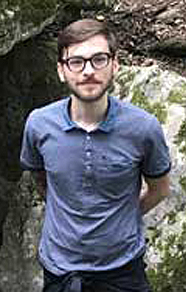 Many seekers today set out on their paths to find something that society is not giving them. In the face of ecological destruction, unflinching individualism, and a general sense of separation and desperation, people are looking for something not quite so tragic as what is currently on the table. Religion and its close cousin, literature, are the great resources in the human search for dignity and meaning. Myth, poetry, and drama can be powerful pathfinders out of this seemingly modern malaise, because they tell us that this search for something more is not ours alone but is woven into the fabric of human existence.
Many seekers today set out on their paths to find something that society is not giving them. In the face of ecological destruction, unflinching individualism, and a general sense of separation and desperation, people are looking for something not quite so tragic as what is currently on the table. Religion and its close cousin, literature, are the great resources in the human search for dignity and meaning. Myth, poetry, and drama can be powerful pathfinders out of this seemingly modern malaise, because they tell us that this search for something more is not ours alone but is woven into the fabric of human existence.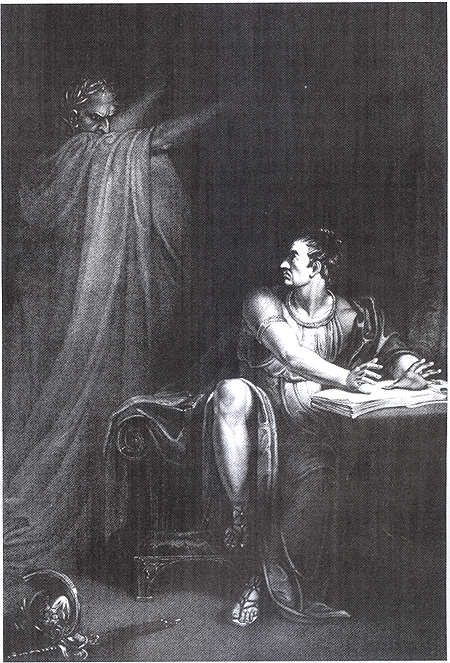
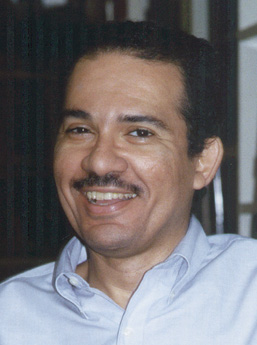 At its inception in 1875, the object of the Theosophical Society was “to collect and diffuse a knowledge of the laws which govern the universe.” It was not an attempt to replicate what was already being done but to investigate areas left unexplored at the time. When the headquarters of the Society was established in India in the 1880s, the Objects began to look more as they do today. Only the Second Object was markedly different from how it now stands: “To promote the study of Aryan and other Eastern literature, religions and sciences and vindicate its importance.” It remained that way during H.P. Blavatsky’s lifetime, only changing in 1896 to its current injunction to encourage the study of comparative religion, philosophy, and science.
At its inception in 1875, the object of the Theosophical Society was “to collect and diffuse a knowledge of the laws which govern the universe.” It was not an attempt to replicate what was already being done but to investigate areas left unexplored at the time. When the headquarters of the Society was established in India in the 1880s, the Objects began to look more as they do today. Only the Second Object was markedly different from how it now stands: “To promote the study of Aryan and other Eastern literature, religions and sciences and vindicate its importance.” It remained that way during H.P. Blavatsky’s lifetime, only changing in 1896 to its current injunction to encourage the study of comparative religion, philosophy, and science.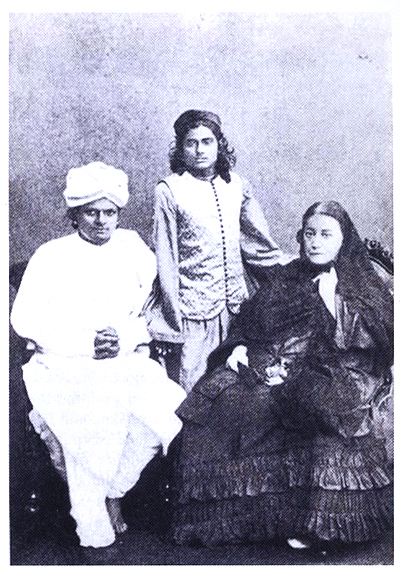
 Many years ago, in a seminar at the New York Theosophical Society, a woman told about a spontaneous memory from the time before she was born. “I saw a vision of what I had to accomplish and what the difficulties would be. I remember saying, ‘Yes, I agree to this.’”
Many years ago, in a seminar at the New York Theosophical Society, a woman told about a spontaneous memory from the time before she was born. “I saw a vision of what I had to accomplish and what the difficulties would be. I remember saying, ‘Yes, I agree to this.’” Over the last few years, along with a small group of colleagues, I’ve been looking into the history of our esoteric lineage. Since the 1970s and ’80s, we’ve been members of what is said to be a very old line of transmission: a particular tradition of wisdom which could broadly be described as Kabbalistic. We know certain facts about how it’s been passed down within the last seventy years, and we have records and reminiscences of those who were involved in the decades before we ourselves came along, from the 1950s onwards. But tracing the trail before that is difficult.
Over the last few years, along with a small group of colleagues, I’ve been looking into the history of our esoteric lineage. Since the 1970s and ’80s, we’ve been members of what is said to be a very old line of transmission: a particular tradition of wisdom which could broadly be described as Kabbalistic. We know certain facts about how it’s been passed down within the last seventy years, and we have records and reminiscences of those who were involved in the decades before we ourselves came along, from the 1950s onwards. But tracing the trail before that is difficult.